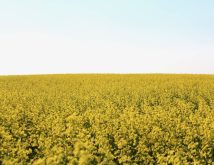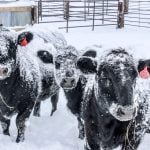Western Canadian winter wheat plantings this year are unchanged from 2012 at 1.15 million acres, but there was a shift in where they were planted, says Jake Davidson, executive director of Winter Cereals Canada.
According to Statistics Canada Manitoba farmers planted around 435,000 acres of winter wheat this fall, down from 600,000 acres last year, Davidson said in an interview last week.
“But I’m not disappointed because it could come out the same as this year as far as harvest if we don’t have any massive (acreage) losses,” he added.
Read Also

Manitoba canola embattled by verticillium
Verticillium stripe pressure has been growing in Manitoba, and canola farmers still have precious few tools to protect their crop from the disease.
A dry fall in 2012 resulted in a poor winter wheat stand and was followed by a cold winter. As a result about a third of Manitoba’s winter wheat was ripped up this spring. Normally only four or five per cent of Manitoba’s winter wheat crop doesn’t get harvested, Davidson said.
While winter wheat plantings are down here, they are up 165,000 and 30,000 acres to 525,000 and 195,000 acres in Saskatchewan and Alberta, respectively.
Winter wheat has lots of agronomic advantages. The timing of its life cycle throws off weeds, insects and diseases. It can also take advantage of wet conditions in early spring.
Good demand
“The grain companies were fighting over it (winter wheat) at the start of the crop year,” Davidson said. “They paid good prices. In many cases people got more for their winter wheat than they did for their spring wheat.”
Recent snow should insulate and protect many of Manitoba’s winter wheat fields, he said. It came with high winds, but the snow stuck where there was stubble and now it’s hard.
“I think the snow is there for the winter and it’s just going to build from here,” Davidson said. “I’m hoping everything is set and now we’re just waiting for March.”
There are some changes concerning winter wheat farmers should know about. Starting Aug. 1, 2014, CDC Falcon, Manitoba’s most popular winter wheat, will move to the Canada Western General Purpose class from the Canada Western Red Winter. The change could result in lower prices for Falcon versus winter wheats approved for flour making. However, in the new open market the class change might not reduce Falcon values as much as first expected as farmers and grain companies are free to negotiate prices. If the specifications are right, some buyers may still buy Falcon for milling.
The Manitoba Agricultural Services Corporation has also changed insurance coverage for winter wheat.
The Stage 1 indemnity (from the time of fall seeding until June 20 the following year), based on 50 per cent of a farmer’s coverage, is gone. Farmers will still be eligible for a reseeding benefit of 25 per cent if their winter wheat fails before June 20. But until now farmers could get 75 per cent of their coverage.
Winter Cereals Manitoba will hold its annual meeting at the Selkirk Inn in Selkirk, Man., March 12, 2014.















